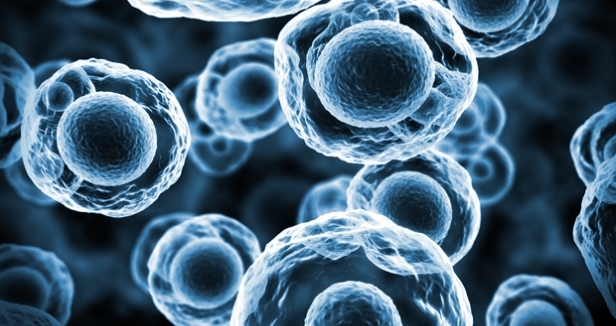Health Today
Is Chronic Inflammation the Key to Unlocking the Mysteries of Cancer?

 Understanding chronic inflammation, which contributes to heart
disease, Alzheimer's and a variety of other ailments, may be a key to unlocking
the mysteries of cancer
Understanding chronic inflammation, which contributes to heart
disease, Alzheimer's and a variety of other ailments, may be a key to unlocking
the mysteries of cancer
Toxicity and long latency nutrient deficiencies are the root cause of chronic inflammation.
Editor's Note: This story, originally printed in the July 2007 issue of Scientific American, is being posted in light of two new studies showing that angiogenesis inhibitors, discussed in this article, may actually make tumors bigger, not smaller.
More than 500 million years ago a set of specialized enzymes and proteins evolved to defend our primitive ancestors against assaults from the outside world. If a microbe breached the shell of some Cambrian-era fauna, the members of this early vintage immune system would stage a savage but coordinated attack on these interlopers—punching holes in cell walls, spitting out chemical toxins or simply swallowing and digesting the enemy whole. Once the invaders were dispatched, the immune battalion would start to heal damaged cells, or if the attacked cells were too badly damaged it would put them to rest.
This inflammatory immune response worked so well that many aspects of it have been preserved during the protracted aeons of evolution. We know this to be true because studies have found that we share many of the same immune genes as the lowly fruit fly—and vertebrates and invertebrates diverged from a common ancestor in excess of half a billion years ago.
For years, immunology researchers have paid relatively little attention to this thuggish innate immune system, basically thinking of it as a crew of biochemical bouncers that pummel anything able to penetrate the tiniest opening in a living being’s skin or shell. They lavished their attention, instead, on the more advanced adaptive immune system, which can marshal antibodies and other weaponry that identify and then target an intruder with a specificity lacking in the untamed innate system.
In the past 15 years, innate immunity has come into its own. Inflammation, its hallmark characteristic, has gained recognition as an underlying contributor to virtually every chronic disease—a list that, besides obvious culprits such asrheumatoid arthritis and Crohn’s disease, includes diabetes and depression, along with major killers such as heart disease and stroke. The possibility of a link with a third major killer—cancer—has received intensive scrutiny in this decade. “The connection between inflammation and cancer has moved to center stage in the research arena,” notes Robert A. Weinberg of the Massachusetts Institute of Technology’s Whitehead Institute for Biomedical Research, who has highlighted the changing emphasis in a revision of his leading textbook, The Biology of Cancer(Garland Science, 2006).
This transformation recognizes that the immune inflammatory state serves as a key mediator of the middle stages of tumor development. Cancer begins with a series of genetic changes that prompt a group of cells to overreplicate and then invade surrounding tissue, the point at which true malignancy begins. Eventually some tumor cells may break off and establish new growths (metastases) at distant sites. That much has been understood for a long time. But cancer biologists and immunologists have begun to realize that the progression from diseased tissue to full-blown invasive cancer often requires cells that normally participate in healing cuts and scrapes to be diverted to the environs of the premalignant tissue, where they are hijacked to become co-conspirators that aid and abet carcinogenesis. As some researchers have described the malignant state: genetic damage is the match that lights the fire, and inflammation is the fuel that feeds it.
In this rewriting of the textbooks, a tumor is not just a clump of aberrant cells; it also includes a support system, a tumor microenvironment, which encompasses a multitude of varying immune cell types and crisscrossing chemical signals, along with a network of blood vessels. The tumor assumes the status of an outlaw organ that exists not to pump blood or rid the body of toxins but to serve only its own ends.
View Source Article Stress, depression may affect cancer survival
Stress, depression may affect cancer survival Defending Against Disease With an Anti-Inflammation Lifestyle
Defending Against Disease With an Anti-Inflammation Lifestyle Increased cardiovascular risk in HIV-infected patients may relate to arterial inflammation
Increased cardiovascular risk in HIV-infected patients may relate to arterial inflammation Inflammation Gone Wild Can Lead To Macular Degeneration
Inflammation Gone Wild Can Lead To Macular Degeneration Chronic Inflammation and Late-Life Decline
Chronic Inflammation and Late-Life Decline INFLAMACIÓN CRÓNICA: EL PROBLEMA DE SALUD DEL CUAL NO HAS ESCUCHADO
INFLAMACIÓN CRÓNICA: EL PROBLEMA DE SALUD DEL CUAL NO HAS ESCUCHADO Dwelling On Stressful Events Can Increase Inflammation in the Body, Study Finds
Dwelling On Stressful Events Can Increase Inflammation in the Body, Study Finds Why Cancer and Inflammation?
Why Cancer and Inflammation? Chronic Inflammation: Reduce It to Protect Your Health
Chronic Inflammation: Reduce It to Protect Your Health Inflammation, Stress and Metabolic Diseases
Inflammation, Stress and Metabolic Diseases Researchers discover link between inflammation and spread of breast cancer
Researchers discover link between inflammation and spread of breast cancer The New Science Behind America's Deadliest Diseases
The New Science Behind America's Deadliest Diseases Foods That Fight Inflammation — And Why You Need Them
Foods That Fight Inflammation — And Why You Need Them MIT confirms link between inflammation, cancer
MIT confirms link between inflammation, cancer Is Chronic Inflammation the Key to Unlocking the Mysteries of Cancer?
Is Chronic Inflammation the Key to Unlocking the Mysteries of Cancer? What Causes Chronic Inflammation?
What Causes Chronic Inflammation? Chronic Inflammation: Reduce It to Protect Your Health
Chronic Inflammation: Reduce It to Protect Your Health Markers of Inflammation and Cardiovascular Disease
Markers of Inflammation and Cardiovascular Disease FAMILY HEALTH GUIDE
FAMILY HEALTH GUIDE The Anti-Inflammation Diet
The Anti-Inflammation Diet






